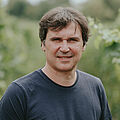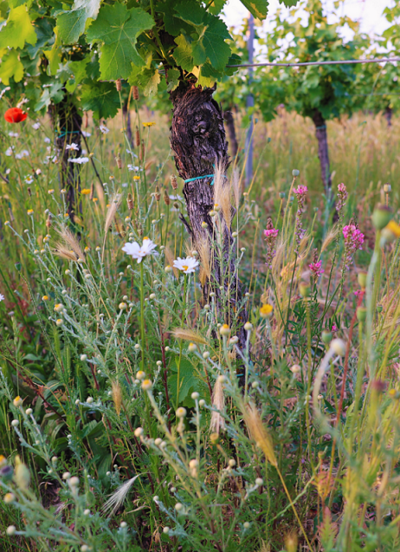Investigation of different greening plants in the understock area of grapevines as an ecological alternative to chemical and mechanical soil management systems
Summary
Targeted greening in the understock area of vines can keep unwanted weeds at bay. As part of an FDW research project, the Rural Area Service Center (DLR) Rhenish Palatinate and the University of Bonn are currently investigating whether and to what extent under-vine greening is suitable as an alternative to chemical and mechanical methods.
Instead of the usual methods of keeping the under-vine area free of weeds, under-vine greening is intended to contribute to the enhancement of the vineyard ecosystem as follows: The creation of new habitats and food sources increases biodiversity. Greening plants contribute (in the understock area) to maintaining soil fertility. Their plant roots also loosen the soil and improve its structure, which increases water infiltration and storage capacity. Soil cover reduces the risk of soil erosion, silting and compaction, especially during heavy rainfall. At the same time, a covered soil can regulate soil temperature and moisture better than an open system and reduce unproductive evaporation on the soil surface.
In times of climate crisis, which is accompanied by an increasing rise in temperature and more frequent extreme weather events, the advantages of understorey greening listed above appear promising. However, it should be borne in mind that greening plants in the under-vine area can compete with the vine for water and nutrients and, if they grow excessively, can have a negative impact on the microclimate in the grape zone and thus on grape health. Furthermore, depending on weed pressure and climatic conditions, it can be very difficult to establish greenery in the under-vine area.
The suitability of greening plants as an alternative weed control measure is being tested in greenhouse and field trials using vegetation surveys, plant and soil analyses, measurements of soil moisture and temperature as well as examinations of the vines. The aim is to be able to recommend the sowing of certain plant species in the understock area depending on the location and the possibilities for mechanical implementation. If successfully established, these can replace mechanical under-vine tillage and the use of herbicides.
Image description: Vine row greening by Saaten Zeller: Species-rich and perennial herb mixture with dyer's chamomile, fat meadow daisy, seed asparagus, ribwort plantain, corn poppy, etc.

Prof. Dr. Jochen Bogs

